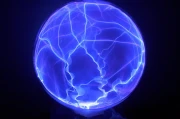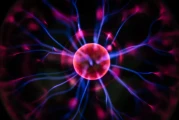The Sub-$1 Hydrogen Promise: Deconstructing the AI-Driven Breakthrough The...
2025-10-05 22 Plasma
Forget Telepathy: Neural Lattices Are About to Redefine Human Connection
===================================================================
For as long as we’ve told stories, we’ve dreamed of telepathy—the silent, perfect transmission of thought from one mind to another. It’s a sci-fi staple, a superpower, the ultimate shortcut. But I’m here to tell you to forget it. Forget the clunky, invasive idea of "mind-reading." What’s coming isn’t about one person raiding another’s private thoughts. It’s about creating a shared space between minds.
The technology is called a Neural Lattice, and it represents a paradigm shift so fundamental that our current communication models—speech, text, even video—will look like cave paintings in comparison. When I first read the foundational whitepaper from a small, unheralded lab in Zurich, I honestly just sat back in my chair, speechless. This is the kind of breakthrough that reminds me why I got into this field in the first place.
We’re not talking about sending an email with your brain. We’re talking about sharing the feeling of a memory, the shape of an idea, the nuance of an emotion, directly and consensually. This isn't about violating privacy; it's about creating a new channel for profound, voluntary connection. It’s the next natural step in the evolution of how we relate to one another, and it’s going to change everything.
Let’s get one thing straight: this isn't another brain-computer interface (BCI) designed to let you type without a keyboard or move a robotic arm. Those are incredible, of course, but they are fundamentally one-way streets—translating neural signals into machine commands. A Neural Lattice is a two-way, multi-node bridge. It works on the principle of resonant conceptual mapping—in simpler terms, it’s like tuning two or more minds to the same abstract frequency, allowing them to collaboratively build and experience a concept without the clumsy intermediary of language.

Imagine a team of architects designing a building. Today, they use words, sketches, and 3D models to try and convey their vision. There are endless meetings, misunderstandings, and revisions because language is, at its core, a compression algorithm. It takes a vast, complex idea and squishes it into a tiny string of symbols. A Neural Lattice bypasses the compression. The architects could instead link into a shared conceptual space and experience the flow of the lobby, the way the light hits the atrium at dawn, the very feeling of the structure, all at once.
This is the technology’s central magic, its Big Idea. It’s not a tool for data transfer; it's a tool for empathy transfer. My favorite analogy for this is to think of music. You can describe a symphony with words—"a soaring crescendo in C major"—but that tells you nothing of the soul-shaking feeling of actually hearing it. The Neural Lattice is the difference between reading the sheet music and being in the orchestra. So, if we can share the "music" of an idea directly, what does that do to collaboration, to art, to healing?
Every so often, a technology arrives that doesn't just change what we do, but fundamentally redefines who we are. The printing press took knowledge from the hands of the few and gave it to the many, sparking revolutions. The internet connected the globe, collapsing distance and creating a planetary hive of information. The Neural Lattice feels like the next leap in that grand story. This is the invention that could finally help us close the agonizing gap between what we mean and what we say.
The speed of this is just staggering—it means the gap between a scientific insight and a global research collaboration, or between a creative vision and a finished film, is closing faster than we can even comprehend. I was scrolling through a forum the other day, and the collective excitement was palpable. One user, a surgeon, wrote: "Imagine a team in the OR, all sharing the same intuitive, tactile feel for a complex operation in real-time." Another, an educator, mused: "What if you could show a student the shape of a mathematical proof instead of just the steps?" These aren’t just idle fantasies; they are the signposts of a coming reality.
Of course, a power this profound demands an equally profound sense of responsibility. We have to build this future with intention. Consent, privacy, and mental sovereignty must be the bedrock of this technology, encoded at the deepest architectural level. I saw a skeptical headline recently that asked, "The End of Individual Thought?" and I believe that frames the question entirely backward. This isn't about losing ourselves; it's about finding new ways to share the best of ourselves, consensually and constructively. The real question isn't what we might lose, but what incredible depths of shared understanding we stand to gain. Are we brave enough to build the protocols and safeguards that will allow us to connect, rather than just command?
For millennia, we’ve been limited by the bandwidth of our mouths and ears. We've built civilizations, created breathtaking art, and unlocked the secrets of the universe using the crude tools of grunts, symbols, and sounds. We’ve done so much with so little. Now, imagine what we could do if we could finally share not just our words, but our worlds. This isn't the end of humanity; it's the beginning of a new, more deeply connected chapter. We’re on the brink of moving beyond the age of information and into the age of understanding. And that is a future worth being profoundly excited about.
Tags: Plasma
Related Articles

The Sub-$1 Hydrogen Promise: Deconstructing the AI-Driven Breakthrough The...
2025-10-05 22 Plasma

They're Calling Everything 'Plasma' Now, and It's Just as Confusing as You'...
2025-10-02 22 Plasma

The word “plasma” appeared in four distinct contexts in my feed over the la...
2025-10-01 33 Plasma